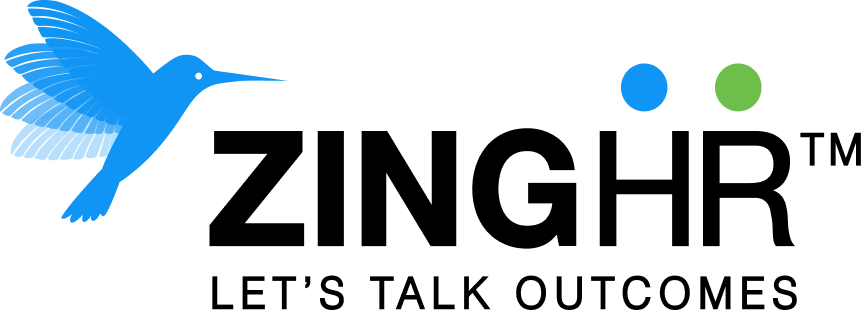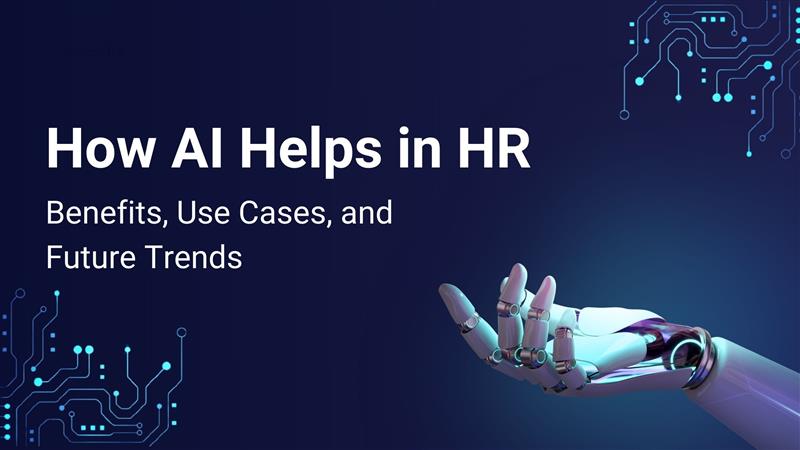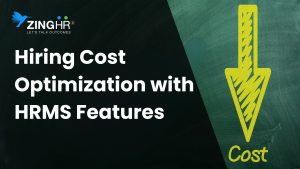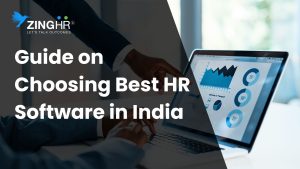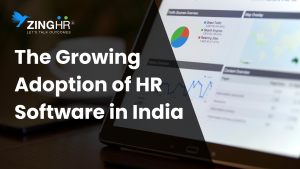The world of HR is changing fast, thanks to Artificial Intelligence (AI). From automating tedious tasks to providing deeper decision-making insights, AI is becoming the new best friend in the HR department. A recent survey by HR technologists found that 68% of HR leaders are already using AI in their organisations, and that number is only going to grow.
HR professionals used to be overwhelmed by admin tasks, from sorting through resumes to doing payroll. But AI is changing that. By streamlining and reducing human error, AI helps HR teams focus on what really matters—talent, employee experience, and organisational growth. AI-powered HR tools can now automate everything from recruitment to performance management and even predict future trends.
In this post, we’ll look at How AI Helps in HR. We’ll discuss the benefits of AI in HR, real-life examples and what the future holds for AI in the workplace. Whether you’re an HR pro or a business leader this post will show you how to use AI to build a more efficient, inclusive and future-focused HR function.
What is AI in HR?
AI in HR means integrating Artificial Intelligence into HR processes to be more efficient, accurate and decision-making. Using tools like machine learning, natural language processing (NLP) and predictive analytics, AI automates repetitive tasks, analyses complex data and provides insights. For example, AI-powered recruitment platforms use machine learning to resume screening and find top talent, NLP driven chatbots handle employee queries in real time. These technologies integrate with HR software to streamline processes like talent acquisition, performance management and workforce planning and make HR a more strategic function.
Top 10 Use Cases of AI Every HR Should Know
1. Talent Acquisition
AI has changed the game for talent acquisition, making it faster, smarter and more efficient.
With AI matching, the tech goes beyond scanning for keywords in resumes, instead of analysing skills, experience and potential to see if the candidate fits the role. This nuanced approach means recruiters can focus on the best talent, saving time and effort.
AI also removes bias from the screening process by standardizing evaluations and eliminating unconscious bias, so there’s more diversity and inclusion in the process.
Chatbot recruiters – virtual assistants that handle initial candidate interactions – are the icing on the cake.
They pre-screen candidates, answer common questions and keep candidates engaged throughout the journey, so it’s a smooth and professional experience for both sides. Together these AI tools turn talent acquisition into a precise, inclusive and fun process.
AI is now transforming performance management by giving both employees and organisations the data to thrive.
2. Performance Management
With feedback that matters, AI does continuous, unbiased 360-degree feedback so employees get real-time actionable insight to grow and improve. This moves beyond annual reviews to a culture of continuous development.
AI also makes it easy to create custom KPIs in seconds, so performance metrics are tailored to the role. This means evaluations are not only accurate but also meaningful, so employee’s efforts are aligned with organisational goals.
Plus predictive performance coaching uses AI to spot performance trends early so HR can intervene and keep employees on track. These innovations make performance management a proactive, growth-oriented process that delivers long-term success.
3. Workforce Planning
AI is turning workforce planning into a forward-thinking and dynamic process so businesses are always ready for what’s next.
With forecasting workforce needs, AI looks at business growth, market changes and industry trends to accurately predict future hiring and training needs. So HR can prevent talent demands before they arise. Skill gap mapping allows AI to identify where skills are missing in teams and recommend targeted upskilling programs to fill those gaps.
Scenario simulation allows organisations to model potential workforce changes – such as restructuring or expansion – and test the impact before they happen. By using these AI-powered tools businesses can optimise their talent strategies and stay ahead of the game.
4. Succession Planning
AI is redefining succession planning by helping you find and develop future leaders with accuracy.
Through high-potential spotlights, AI looks at performance data, engagement levels and growth to identify employees with leadership potential. This gives HR teams a focus on the people most likely to succeed in key roles.
AI also creates personalized development plans, recommending career paths and training programs to develop these high-potential people into leaders. Turnover risk alerts also give early warning of potential attrition in key roles so you can implement proactive strategies to retain talent and maintain leadership continuity. By using AI in succession planning you can build a pipeline of future-ready leaders.
5. Payroll Process
AI is transforming the payroll system by automating the complex, making it fast, accurate and reliable.
Zero-touch payroll means AI does all the calculations, tax compliance and salary disbursement so you get error-free, on-time payments.
This saves time and eliminates manual errors giving peace of mind to HR teams. Attendance-driven payroll further simplifies things by integrating attendance and time-tracking data into payroll systems so payments are seamless and precise.
Software Anomaly detection uses AI to flag irregularities in payroll transactions like duplicate payments or tax deductions so you stay compliant and risk-free. By simplifying payroll complexities, HR teams focus on more strategic initiatives.
8 Benefits of Artificial Intelligence (AI) in HR
1. Recruitment, but Smarter
AI has taken recruitment beyond resume screening. Instead of just looking for keywords, AI analyses resumes to understand the context, skills, experience and qualifications. For example, machine learning algorithms can look at a candidate’s career path, identify transferable skills and predict their success in a role.
This intelligent matching means recruiters spend their time talking to top candidates not sifting through a mountain of resumes, resulting in faster hires and better alignment between employee capabilities and business needs.
2. Instant Answers – HR Chatbot
AI-powered HR chatbots are changing the way we interact with employees by providing instant 24/7 support for everyday queries. Whether it’s checking leave balances, company policies or reimbursement processes, chatbots give employees the answers they need without delay. They integrate with HR systems and pull data in real-time to give context-specific answers.
Chatbots also guide employees through processes like updating personal info or applying for benefits and reduce the need for HR to get involved in admin tasks.
This means happier employees and HR can focus on strategy and business goals. Chatbots are a valuable addition to the modern HR department.
3. Bias-Free Hiring Decisions
AI is helping to drive fair and inclusive hiring by removing unconscious bias that creeps into traditional recruitment. Human recruiters may unintentionally favour certain candidates based on relation, name, gender or educational background.
AI evaluates candidates purely on qualifications, skills and potential. By standardising the process and using objective criteria, AI in recruitment means every candidate has an equal chance, regardless of demographic.
AI tools can also analyse job descriptions to remove biased language and make them more appealing to a diverse talent pool.
This means organisational diversity and a culture of equity and inclusion.
4. The Predictive Powerhouse
AI predictive analytics has turned recruitment into a forward-thinking process, HR can now identify top performers before they are hired. By analysing historical data including resumes, assessments and even social profiles AI can predict a candidate’s likelihood of success in a role.
5. Hyper-Personalized Training Paths
AI is changing employee learning and development by creating bespoke training paths that fit individual needs. By analysing an employee’s performance data, skill gaps and career aspirations, AI suggests training programs and resources to help them grow.
For example, an employee who wants to move into a leadership role might get a curated mix of leadership courses, mentorship opportunities and real-time feedback mechanisms.
This tailored approach means employees get relevant training that aligns with their career goals and increases engagement and productivity.
With AI personalisation organisations can have a highly skilled workforce ready for the future.
6. Retention Radar
AI serves early warning for employee turnover by identifying those who are at risk of leaving. By looking at patterns in feedback surveys, performance metrics, attendance records and even ways of communication, AI flags potential retention issues well in advance.
Once identified, AI suggests proactive solutions for each individual – career development opportunities, workload adjustments or enhanced benefits.
By addressing these issues early organisations can retain top talent, build loyalty and reduce the high cost of employee turnover. AI’s retention radar helps HR teams to have a more stable and motivated workforce.
7. Zero-Touch Administrative Tasks
AI is redefining admin efficiency in HR by automating time-consuming tasks, so HR professionals can focus on strategic growth. From processing payroll to compliance checks, AI does these tasks with precision and speed. For example, payroll systems can calculate salaries, deduct taxes and payout with minimal human error.
Compliance monitoring tools can track regulatory updates, flag potential risks and generate audit-ready reports automatically. By removing the manual workload AI not only boosts operational efficiency but also empowers HR teams to invest time in driving business growth and employee engagement.
8. Next-Level Workforce Planning
AI is supercharging workforce planning by allowing HR to predict future needs, close skill gaps and adapt to changing industry trends. With predictive analytics AI forecasts workforce demand based on business growth, market conditions and employee turnover.
It also identifies emerging skill shortages within teams so organisations can design training programs or hire new talent. And AI analyses industry data to highlight trends that will impact workforce strategy such as changes in technology or regulation.
By providing actionable insights AI means businesses are ready with the right talent at the right time to stay ahead of the curve.
Challenges in Implementing AI in HR
1. Resistance to Change Among HR professionals
The biggest challenge in implementing AI in HR is getting HR professionals to change.
Many HR teams use traditional ways of working and see AI as a risk to their jobs.
There is fear of losing the “human touch” in HR which is key to building relationships and trust within an organisation. To address this organisations need to invest in comprehensive training programs that show How AI helps in HR rather than replace human roles.
Clear communication about how AI can reduce workload and improve efficiency will help ease this transition and get HR teams on board.
2. Data Privacy and Security Concerns
AI in HR involves collecting and processing sensitive employee information so there are big issues around privacy and security.
Any breach or misuse of data can lead to legal consequences and losses of financial and employee trust. Organisations must comply with data protection regulations such as GDPR and implement robust cybersecurity to protect information.
Clear policies around data usage and secure storage will help mitigate these risks.
Working with trusted AI vendors who put data security first is key to building confidence in AI-powered HR solutions.
3. Dependence on High-Quality Data for AI Accuracy
The effectiveness of AI in HR is only as good as the data it’s fed.
Poor quality or incomplete data will lead to inaccurate insights, misinformed decisions and a loss of trust in the AI system. Outdated or biased data will perpetuate the problem rather than solve it.
Organisations must prioritise data hygiene by regularly updating, cleaning and validating their data. Working with data experts to build a strong data foundation and continuous monitoring will make AI much more accurate and reliable in HR processes.
4. Balancing AI-driven decisions with Human Empathy
AI brings efficiency and prevents HR processes but lacks emotional intelligence to understand human behaviour.
Over-reliance on AI for decisions like hiring or performance reviews can lead to impersonal outcomes and disengagement. While AI can provide data and insights, building trust, empathy and understanding.
HR teams should see AI as a support tool, using analytics to inform decisions but making sure the final judgement is compassionate and fair. By combining AI with human empathy organisations can have a people-centric approach to HR and benefit from the technology.
Explore the Future of AI in HR
The future of AI in HR is bright, and it’s being driven by trends and technology. One of the biggest trends is generative AI for onboarding, which can create bespoke onboarding experiences, including customised training materials and a virtual intro to company culture.
AI is also giving HR teams deeper analytics than ever before on employee engagement, productivity and retention.
Another big one is fully automated HR processes. From recruitment to payroll to performance management, AI-powered systems will be handling end-to-end workflows, so HR can focus on strategy and employee wellbeing.
AI will also create more inclusive and diverse workplaces. By removing bias from recruitment, performance reviews and succession planning, AI will help organisations build fair and more equal work environments.
Looking forward to the integration of how AI helps in HR in the way companies manage their workforce, so technology enhances, not replaces the human touch in HR.
